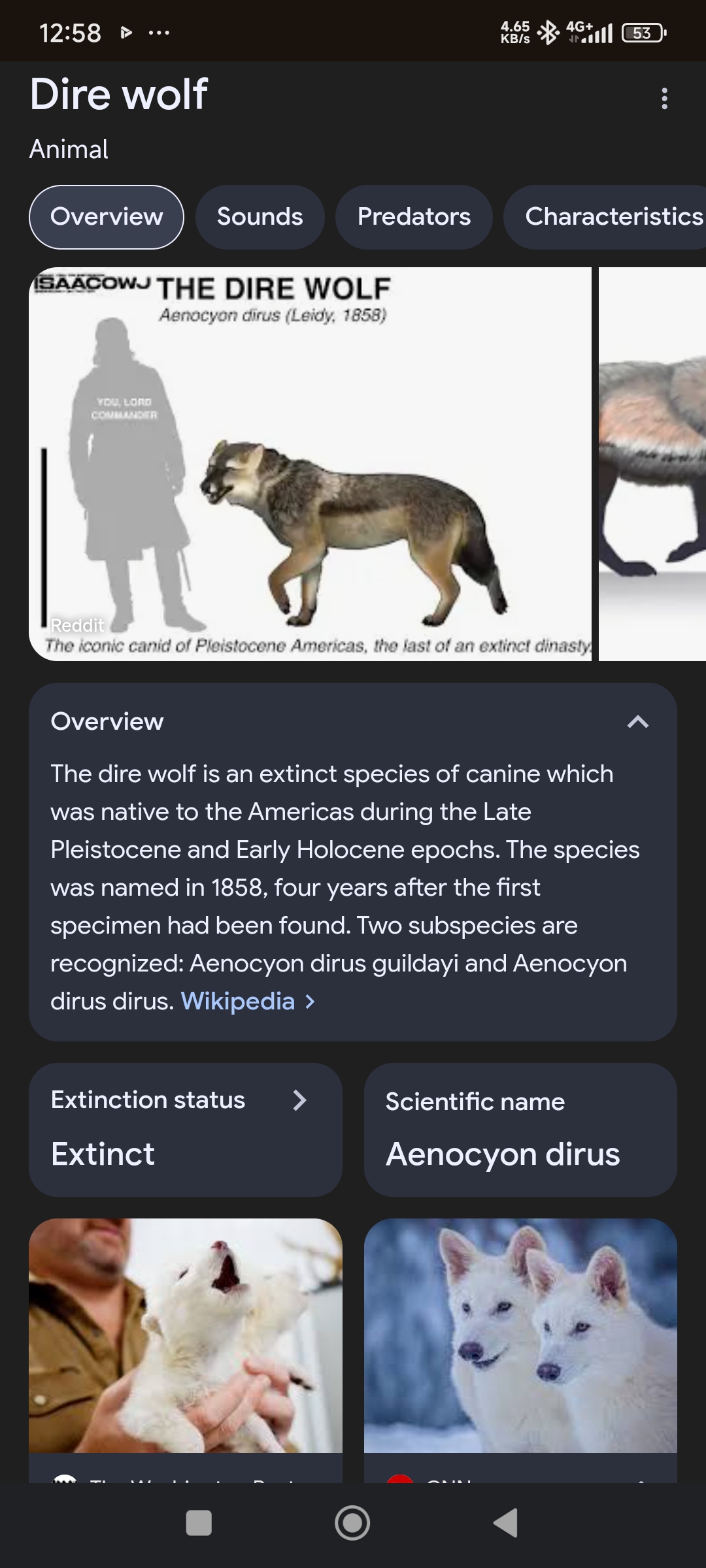Colossal Biosciences, the company known for its ambitious woolly mammoth de-extinction project, has now set its sights on another iconic Ice Age creature: the dire wolf. The company recently announced a significant breakthrough in their efforts to bring back this extinct canid, marking a pivotal moment in the field of de-extinction and raising complex ethical and scientific questions about resurrecting lost species. While the project remains in its early stages, the initial progress suggests that the dream of seeing dire wolves roam the Earth once again may not be as far-fetched as once imagined.
## Colossal Biosciences Advances Dire Wolf De-Extinction Project
Colossal Biosciences has officially launched its dire wolf de-extinction project, building upon their existing work with woolly mammoths and Tasmanian tigers. The company's approach centers on advanced genetic engineering techniques, specifically CRISPR gene editing. By comparing the genomes of dire wolves with those of their closest living relatives, such as African wild dogs and gray wolves, scientists aim to identify the specific genetic differences that distinguished the dire wolf. These differences will then be introduced into the genome of a living wolf species, gradually transforming it towards the dire wolf phenotype.
## Genetic Blueprint Unveiled: Key to Dire Wolf Traits
A crucial step in the de-extinction process is understanding the genetic makeup of the target species. Colossal Biosciences has made significant progress in sequencing and analyzing the dire wolf genome, revealing key genes responsible for its unique physical characteristics. These include its larger size, more powerful jaws, and distinctive skull shape. Identifying these crucial genes allows scientists to focus their gene-editing efforts on the specific traits that defined the dire wolf, increasing the accuracy and efficiency of the de-extinction process.
## CRISPR Technology: The Engine of Resurrection
The core technology driving the dire wolf de-extinction project is CRISPR-Cas9 gene editing. This revolutionary tool allows scientists to precisely target and modify specific DNA sequences within a living organism's genome. In the case of the dire wolf, CRISPR will be used to introduce the identified dire wolf genes into the genome of a suitable surrogate species, likely a gray wolf. This process will involve multiple rounds of editing and selection, gradually nudging the surrogate's genetic makeup closer to that of the extinct dire wolf.
## Ethical Considerations and Conservation Implications
The prospect of resurrecting the dire wolf raises profound ethical considerations. Questions about the welfare of the engineered animals, the potential impact on existing ecosystems, and the long-term sustainability of a reintroduced population must be carefully addressed. However, proponents argue that de-extinction could also offer significant conservation benefits, potentially restoring lost ecological functions and increasing biodiversity. A thorough and transparent ethical review process is essential to ensure that the dire wolf de-extinction project proceeds responsibly and benefits both the environment and society.
The Colossal Biosciences' dire wolf de-extinction project represents a bold step into the uncharted territory of genetic resurrection. While significant challenges remain, the company's advancements in genome sequencing and CRISPR technology offer a glimpse into a future where extinct species might once again roam the Earth. The project's success hinges not only on scientific breakthroughs but also on careful ethical considerations and a commitment to responsible conservation practices. Only time will tell if the dire wolf will truly rise again, but the journey promises to reshape our understanding of extinction, genetics, and our relationship with the natural world.
Like this:
Like Loading...
Related






